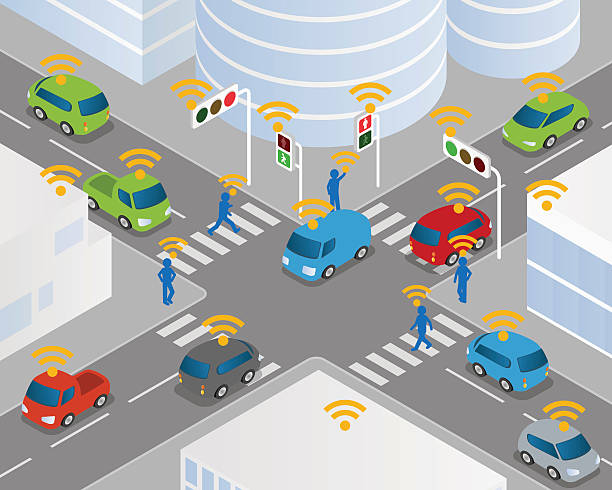Top Embedded System Engineering Projects
Follow articleHow do you feel about this article? Help us to provide better content for you.
Thank you! Your feedback has been received.
There was a problem submitting your feedback, please try again later.
What do you think of this article?
Embedded systems are all around us, from smart home devices to the engines of modern cars. They are at the heart of countless technologies we rely on daily. Embedded system engineering constantly evolves, with new projects pushing the boundaries of what is possible. Whether developing a low-cost, low-power wearable device or creating a real-time monitoring system for industrial applications, the possibilities for embedded system engineering projects are endless.
In this article, I'll discuss some of the most exciting and innovative embedded system engineering projects worldwide. From advanced robotics and automation to cutting-edge medical devices and environmental monitoring systems, these projects showcase the breadth and depth of what can be accomplished through embedded system engineering. By highlighting these projects, we hope to inspire new ideas and encourage further innovation in this vital field.
Top Embedded System Engineering Projects
1. Automating Cars Using Embedded Systems Technology
Automating cars using embedded systems technology has been one of the most exciting and transformative projects in embedded system engineering. This project uses embedded systems technology to create self-driving cars that can navigate the roads without human intervention. The potential benefits of this technology are enormous, including improved safety, reduced traffic congestion, and greater efficiency in transportation.
Automating cars using embedded systems technology relies on various sensors and systems that work together to create a detailed picture of the car's surroundings. It includes cameras, radar, LIDAR, and GPS systems that can detect obstacles, map the environment, and decide the car's speed and direction. Additionally, the embedded systems technology that powers these cars must be incredibly robust and reliable to guarantee the safety of the passengers and other road users.
2. Automated Railway Crossing
The development of an automated railway crossing is a critical embedded system engineering project that has the potential to revolutionize the safety of railway transportation. Railway crossings are notorious for accidents and fatalities, with many incidents caused by driver error or misjudgment. By developing an automated system that can detect and respond to trains, the risk of accidents can be significantly reduced.
An automated railway crossing system relies on sensors and actuators that work together to detect the presence of trains and control the crossing's barriers and lights. The system typically uses a combination of radar, infrared sensors, and cameras to detect the train's approach and assess its speed and distance. Once the train is detected, the system automatically lowers the barriers and activates warning lights to alert drivers and pedestrians to the approaching train.
The automated railway crossing is an excellent real-life examples of embedded systems engineering that can improve safety and efficiency in transportation. By reducing the risk of accidents, this technology can save lives and prevent injuries, improving traffic flow and reducing delays. As such, it is a critical area of research and development that can potentially transform the railway industry.
3. Fingerprint-based Biometric Attendance System
The development of a fingerprint-based biometric attendance system is an exciting and innovative project that has the potential to revolutionize attendance management in various sectors. This technology uses an embedded system that captures and verifies an individual's unique fingerprint to record their attendance. This system eliminates the need for traditional methods of attendance management, such as manual registers or swipe cards, which can be time-consuming, error-prone, and vulnerable to fraud.
The fingerprint-based biometric attendance system relies on hardware and software to capture and process biometric data. The hardware typically includes a fingerprint scanner, a microcontroller, and a memory device to store the attendance data. The software used in this system includes algorithms for processing fingerprint data and matching it against the stored data to verify the person's identity.
4. Smart Traffic Lighting System
A smart traffic lighting system is a project that aims to improve the efficiency and safety of traffic management by using sensors, artificial intelligence, and internet connectivity to adjust traffic lights according to real-time traffic conditions.
Developing a smart traffic lighting system is a crucial embedded system engineering project that can significantly improve traffic flow and reduce road congestion. This technology uses embedded systems to monitor traffic in real-time and dynamically adjust traffic signals to optimize traffic flow. By reducing delays and congestion, this technology can improve travel times, reduce emissions, and improve the overall driving experience.
The smart traffic lighting system uses sensors and algorithms to optimize traffic flow. The system uses cameras, radar, and other sensors to detect the presence of vehicles, cyclists, and pedestrians at intersections. Based on the real-time data collected from the sensors, the system then dynamically adjusts traffic signals to optimize traffic flow and reduce delays.
5. Hazardous Gas Detection and Alerting System
Creating an embedded system for detecting and alerting hazardous gases is a paramount project in embedded system engineering with the potential to save lives and safeguard the environment. The technology utilizes sensors and algorithms to identify the presence of dangerous gases and alert personnel of potential danger. This system is indispensable in chemical manufacturing, mining, and oil and gas production, where hazardous gases pose a significant risk to workers' safety.
The embedded system for hazardous gas detection and alerting integrates gas sensors, microcontrollers, and communication systems to detect and notify personnel of potential danger. The gas sensors are custom-built to identify specific gases and provide real-time data to the microcontroller, which analyzes the data to determine whether the gas levels are hazardous or safe. If the gas levels are hazardous, the system automatically triggers alarms, dispatches alerts to personnel and initiates safety protocols to avoid accidents.
Conclusion
The field of embedded system engineering is incredibly diverse and exciting, with countless opportunities for innovation and problem-solving. The projects highlighted in this article demonstrate the wide-ranging impact that embedded systems can have on our world, from developing life-saving medical devices to creating more sustainable energy systems.
The demand for talented embedded system engineers will only grow as technology evolves. With a passion for innovation and a dedication to solving complex problems, these engineers have the power to shape the future of our world in countless ways. By continuously pushing the boundaries of what is possible through exciting and innovative projects, we can create a better, more connected, and more sustainable world for future generations.



Comments